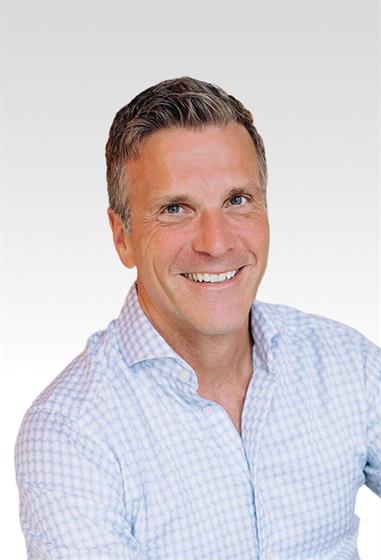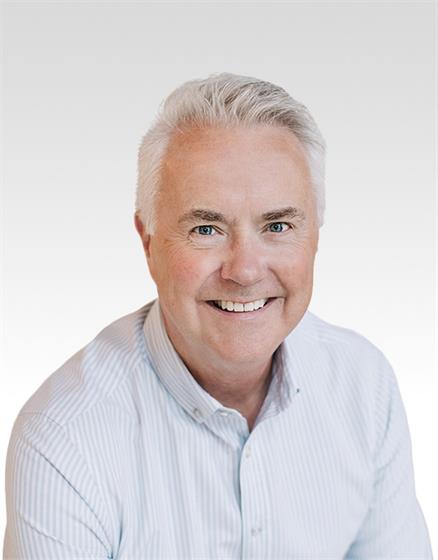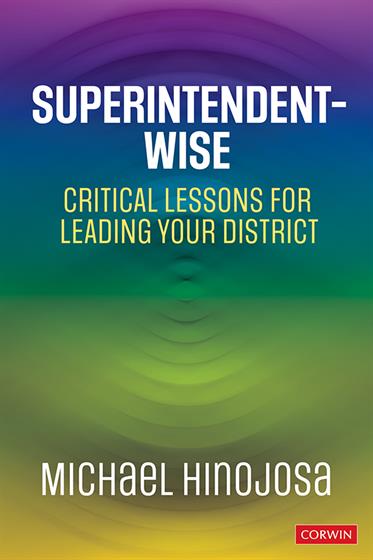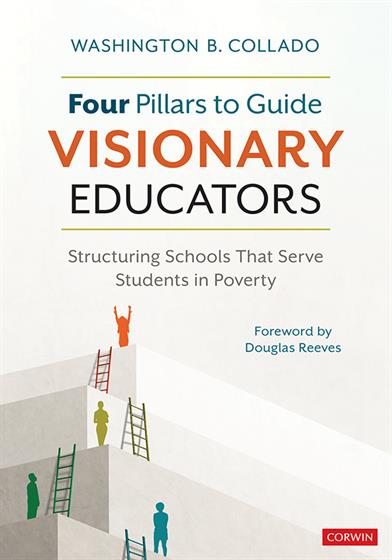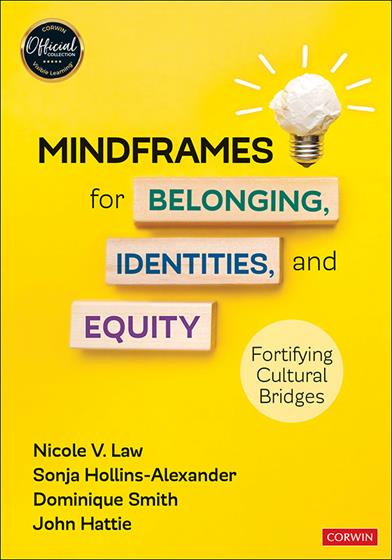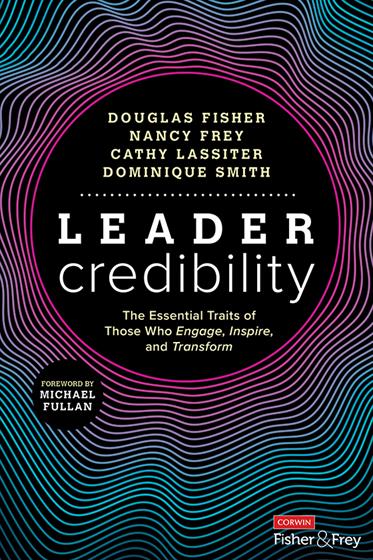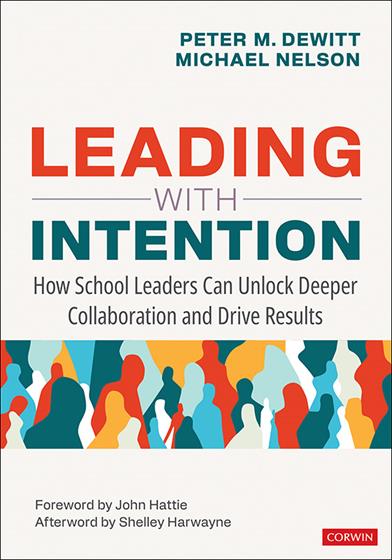SPEAKER 1: Welcome to Corwin's Leaders Coaching Leaders podcast, with hosts Peter Dewitt and Michael Nelson. This
podcast is from education leaders for education leaders. Every week, Peter, Mike, and our guests get together to
share ideas, put research into practice, and ensure that every student is learning not by chance, but by design.
SPEAKER 2: Picture yourself popularly known among staff members as the reliable, go-to person who makes meaningful
change happen. This is possible when you equip yourself with robust strategies and tools from Corwin's
Leadership Workshops. Sign up today@corwin.com.
MICHAEL
NELSON:
Peter, how are you today?
PETER DEWITT: I'm doing well, Michael. Here we are, start off of season nine.
MICHAEL
NELSON:
Season nine. Oh my goodness, that's pretty exciting.
PETER DEWITT: Yeah. So we're hanging out in a hotel in Toronto because we just finished some long-term work. So what we
thought we would do with this podcast is talk a little bit about the work that we've been doing because we had
the book, Leading With Intention, come out last year, but we're working on a book on collective leader efficacy.
And then after we talk a little bit about some of the core elements of collective leader efficacy, we'll talk a bit
about our guests for this year. This season's going to be pretty awesome with how it's lining up.
MICHAEL
NELSON:
Yeah, we have some great guests. And I can't wait to share those with you toward the end. But Peter, we just got
back from New Brunswick, and there were some amazing experiences. They are nudging us as leaders exploring
how to do great work around collective leader efficacy.
And the reason that they're pushing us so strongly is that we just don't come in and support them for a day or
two, and then leave and never see them again. We've been on this 15-month journey. And so obviously, Peter
and I cannot be doing the same things over and over again, each time we come to them.
Yet we have found that they have blessed our work and deepened our thinking around collective leader efficacy.
So share a little bit about your thoughts.
PETER DEWITT: Yeah, no. I love that beginning, because I think there's a lot-- for this being the first podcast episode of our
season, I think there's a lot there to what you're saying. With this 15-month journey, we've been trying to
understand how to engage them in different ways.
And in August of last year, when we were working with them, we had taken so much of their exit ticket data and
we looked at survey results, and all these things, and we ended up looking at how can we get them into
communities of practice groups, because there are over 50 of them. They're spread out over hundreds of
kilometers. And we wanted to make sure that it was going to be relevant for them.
So they ended up-- because of the exit ticket data we've used and the survey results, we found six communities
of practice focuses for them. And that day in August worked beautifully, because they all chose one. And we've
been working with them in person three times so far this year, but remotely every month, we have an hour
coaching session with their communities of practice.
And I think there are a few things that I want listeners to understand about what we're doing. Number one, yes,
we do one-day workshops and we'll do keynotes. But our real-- what we really value is those long-term
partnerships, because just like you said, the reciprocal learning.
You can't go in and just say, OK, this is the third day we're going to work together. So let's grab that slide deck.
It's really based on their results and what they put into our exit tickets. And then we use that to drive our
instruction, which really has given us the opportunity to go deeper with what we're doing.
So if you're facilitating professional learning, if you're a principal who is looking at engaging your staff, or a
superintendent looking to engage your staff, how do you do use surveys that are going to give you the
information you need to drive job-embedded, consistent, professional learning?
And quite honestly, I know we're both grateful for working with New Brunswick, because the leaders come in and
they're just so engaged. And they ask us deeper questions, which gets us to think, after we're even leaving, how
do we go deeper with this work?
And the overall focus has been collective leader efficacy, which has been important for us, because I wrote a
book on it years ago when I looked at the eight drivers, and collaborative inquiry, and that kind of stuff. But what
we've been focusing on in the past year is actually much deeper than that.
And I don't want to say don't read the first book. But the reality is, you and I working together is a form of
collective leader efficacy because we're developing together a shared understanding. We're engaging in joint
work with groups.
And then we're really, I would say, more than ever collecting evidence of impact in the work that we're doing. So
those are the three core drivers of collective leader efficacy.
MICHAEL
NELSON:
Absolutely. I think both Peter and I-- I'll speak for myself, Peter. I won't speak for you. How's that?
What I believe is we're back to teaching again. We're back to being superintendent again, leading leadership
team meetings. And what I mean by that is, first of all, each of our meetings, or our learning sessions, they
connect to each other.
So what we just finished maybe last month during the virtual session, we use that to catapult us in our in-person
session that we just did. So that's one piece. But we're having to be exquisite listeners to our learners, which are-
- and in the example of New Brunswick, we have 52 incredible principals that we're working with.
We have to be exquisite listeners in what they're saying, and in particular, maybe what they're not saying as this
formative assessment of how we might go deeper. What are ways in which we can strengthen the work around
what Peter introduced, of shared understanding, joint work, evidence of impact, and what we might do in a onetime
only piece where we would introduce here's the definition of collective leader efficacy. Here's what we
generally believe to be shared understanding, joint work, and evidence of impact. And maybe we might process
that just a bit. And then we would leave.
Where here, it's like, OK, we're not only moving through the definition, but we're moving into that application of
what does that mean on a daily basis for them as leaders in their building? And how can those three concepts
really catapult their leadership, their work with their staff, and ultimately it make a huge impact for students?
And that's the work that's really exciting to me. And we're trying to describe it and play with it in new pieces of
writing for us.
PETER DEWITT: Yeah. And I think part of what we have learned over this time that we're working together on this is that-- and
this isn't a criticism, but collective teacher efficacy is something people always focus on. And that's really
important, from grade level to grade level, from department to department.
We know that the research that John Hattie has collected around-- the meta analysis around collective teacher
efficacy is really important. But what we also know from leaders is that the strength comes in pockets. Not every
grade level is developing collective teacher efficacy. And if we get all the grade levels to do that, then that's
going to create a stronger system.
I feel like collective leader efficacy is that component that actually really includes the leader and the leadership
team. Because what we have found when we are doing one-day workshops is oh, if we can just go back and get
our teachers to do this, then we're going to be perfectly fine. And it's like the leader doesn't always see
themselves in that. And it's easy to go back to management and not find that balance between management and
instructional leadership.
Collective leader efficacy is around the leadership team. So the work we've been doing is really about when we
look at Bernhardt's data, demographic perceptions, student learning, school processes, when we get to school
processes, there are lots of things like MTSS tier one instruction in your curriculum that are part of a school
process, but so is collective leader efficacy. So is your instructional leadership team.
So how does the work you're doing having an impact not just on teachers changing the strategy in the classroom,
but actually have an impact on student learning and engaging in that conversation. And those are the things
we're able to talk about with New Brunswick and all the other groups that we're working with long term.
I think the other misnomer, because this came up in a one-day workshop that we just recently did in Canada as
well, is that the school district really wanted their focus to be collective leader efficacy. When we were talking
about collaborative inquiry, what's the problem you're trying to solve, or where is that area you want to grow?
What's your theory of action? If we do this, then what's going to happen? What evidence are you collecting? We
just talked about Bernhardt's, and then the reflection piece.
And I feel like we always have to talk about is that collective leader efficacy isn't necessarily the focus you have
for collaborative inquiry. It needs to be focused on student outcomes. And when you focus on student outcomes
like literacy, or numeracy, or tier one instruction that's going to strengthen the learning for students, you develop
collective leader efficacy during that.
Because what we ask people to do when they're looking at the placemat that we have that is the collaborative
inquiry placement is that they've got their problem of practice. And then we ask them what would success look
like? And they have to develop success together. And that's that shared understanding.
And I'll talk a little bit about shared understanding. And I want you to talk about these core elements of joint
work. With shared understanding, what we found through the research we're doing and the practice that we're
engaged in, and that's why we're so grateful for long-term partners like New Brunswick, is that when we're
looking at shared understanding, it's really three core parts to it.
Number one is trust. If you don't have trust with the person you're working with, then you're not going to hear
them in the same way. And you were just talking about that with New Brunswick. We had to listen to them in
different ways. That's because we have trust together.
The number two part is clarity. When you're developing success criteria around that problem that you're trying to
focus on, or the improvement you're trying to make, you need to keep thinking about what are ways that we can
be more clear. And that happens through developing success criteria. But it also happens through our
communication.
And we use things like creating their own connections games around the priorities that they care about. Let's
think of some fun ways to provide clarity as well to get people talking. And then the third piece is coherence. And
Michael Foal and Joanne Quinn have talked about that for years.
But how are we coherently making sure we're sticking to that priority? So what kind of conversations are we
having at our instructional leadership team? What kind of conversations and learning are we doing at our staff
meetings? What kind of messages are we sending out to families in engaging with them?
So that whole idea of shared understanding is really about trust, clarity, and coherence. And then through that,
you start to engage in joint work.
MICHAEL
NELSON:
Right. And joint work-- I guess I'll just share just a bit about some of the stories. When I was a building principal, I
remember the first day or so, I walked through the school and all of the classroom doors were shut.
And as Peter talked about collective teacher efficacy, how do we break out of those silos of our teachers, where
the classroom doors are open and that they're willing to share practice, and observe each other in classrooms,
and engage in conversations with each other. That's collective teacher efficacy.
And as you launch that into the world of leadership in this world, I think leaders, probably close to 100%, would
say it's a lonely job at times. Being the principal of a school or the superintendent of a school district, it's lonely.
And how can we break down that loneliness?
Because what we believe is working in silos doesn't get you the highest performance measures. And so how
collective leader efficacy and engaging in joint work is really powerful. As Peter said, we were just in New
Brunswick, and we had this incredible activity where we divided the group of 50 into smaller groups, eight
groups.
So each group had about five individuals in their group, so one through eight. One group was considered the
district office, seven were considered schools. And they each had a 50-piece puzzle in a bag.
There was no cover to the puzzle. There were no directions about the puzzle. And we asked them to engage as a
school, as a school district, in putting that puzzle together. But we took away the communication of talking, both
verbally and nonverbally.
So they put it together. And within minutes, without talking, they realized they did not have all the parts for their
puzzle. They had the correct number of pieces, but they did not have all the parts. Yet they weren't able to talk.
They were definitely defining what solo looks like. Gradually over the exercise, communication opened up, and
the realization that they became-- they needed each other in order for them all to be successful. We don't just
want some of our schools in our school district to be successful, as Peter shared.
We don't just want some of our classrooms to be successful when we're talking about collective teacher efficacy
for some of the grade levels. We do want to achieve-- have that mission that we do want all.
So gradually, over this exercise, we opened up meetings where one person, the principal from each school, met
with the superintendent, and the exercise gave them just a little bit of clues for communication to go back to
their teams. Communication opened up. And pretty soon, by the end of the exercise, over slow time, the
realization that they were all successful in putting their puzzle piece together-- puzzles together with the correct
number of pieces, the correct pieces. But they needed each other in order to do that.
The exercise itself, OK, putting a puzzle together. We all have put puzzles together. But the power of the exercise
came in the debrief and the realization that oh my goodness, there are times that I feel as a principal that I need
the district office, and I'm not feeling the support.
I'm feeling they have what I need, yet I'm not able to get it. Or we had one principal say, I just was going to do it.
So I just got up.
I couldn't talk, but nobody told me I couldn't get up. And I'm just going to go over and I'm going to go find my
pieces. And my school is going to have their puzzle put together.
But what I realized was I was looking at it through the lens of my school, my students. I wasn't looking at it
through the lens of the system and the realization that oh, I may be [INAUDIBLE] but I need to care about the
other schools, and how can we build that type of culture? So one quick example, Peter, through an experience of
joint work.
PETER DEWITT: Yeah. And what I really enjoyed about that activity, or using that strategy is that it was about 45 minutes to an
hour, but there were a lot of things that played out where at first, when they couldn't talk-- when you're watching
a group of, say, six or seven people, what I found is that they were all working together.
Some people were really strong at putting puzzles together and others were not, which is like real life. Some of
us feel efficacious in that moment.
MICHAEL
NELSON:
And some of it wasn't the designated principle.
PETER DEWITT: Yeah, yeah.
MICHAEL
NELSON:
That was putting in the puzzle piece. So you have a teacher maybe trying to work around the principle.
PETER DEWITT: Yeah, exactly. So you're watching those things happen. And some of them noticed that the pieces were missing
before others did and they were able to engage. But then you had some of them that wanted to break away from
the rules and, like, I want us to be successful, so I'm not going to follow this pattern.
So it was a really great thing to be able to do. And I definitely think it mirrors what our leadership team meetings
can really look like, or the impact that collective leader efficacy can have. That joint work is really interesting.
MICHAEL
NELSON:
Judith Warren Little talks about in many of her articles the idea of being both congenial and collegial. What was
fascinating about this activity is they were working in teams. They made the application to how this could be in
their system.
But what was fascinating is I believe that 45 minutes became an anchor, a memory, a core memory in the minds
of the people who participated. Because we went to dinner as a collective group that night, and the conversations
were going back and forth in the laughter in what their behaviors were and how they applied it to what real-life
situations.
When you have an experience like that core memory, core learning experience, you don't forget it. And all of a
sudden, you can feel when maybe you're not-- you're working in silo in the middle of a work situation and bring
back that memory of OK, how can I might work in a joint situation? Who might I need to call for support? Who do
I need to bring together, all my elementary principals, all my secondary principals, and for the betterment of the
system here.
PETER DEWITT: And one last thing about the puzzle activity is that I think that what made it so powerful for us is the fact that
they were so deeply engaged in it, too. So they were teaching us at the same time we were trying to teach them.
That's a reciprocal learning piece.
So this leads to that whole idea of evidence of impact. And I think what's intimidating about that for leaders,
whether we're talking about principals, superintendents, assistant superintendents, doesn't matter, is that they
feel like they're supposed to know it all before they go in.
So I'm just going to be brutally honest. Evidence of impact is something that I've had to do a lot of work to
understand. And so we draw on and cite Bernhardt's work. So we're looking at Victoria Bernhardt's work,
especially from 2018. That's just going to be specific.
But when we're looking at demographics, and perceptions, and school processes, and student learning, we find
that people collect demographic data really quickly, and not a problem at all. But what Bernhardt actually says is
that we're at risk of using that demographic data to make excuses for why we can't move on. And that comes up
a lot.
When we're coaching individually, coaching teams, whatever, they'll often go to, well, we're a high-need school.
We're a high-poverty school. And that doesn't mean that the kids can't learn.
So we've been diving into multiple measures of data and looking at what is your priority. Literacy, for example,
and going into what's your demographic tell you? We're a high-needs school. OK, what else do you have?
And they usually go to the students or parents when we're in these conversations, which, if you're paying
attention when you're facilitating, whether you're facilitating workshops like you and I do, or you're facilitating a
data conversation, you'll notice what's missing. And what's missing from the conversation is the whole idea of
what about teachers' knowledge and skills? And that's not a criticism either.
I mean, we are all teachers, and we have those times when we didn't have the knowledge and skills. We had to
learn them. And I still feel that way.
But it's about if you're coming from a nontraditional path, or if you're in middle school or high school teacher, and
now you find yourself teaching literacy because literacy proficiency rates have gone down worldwide, that means
you're in a different position and you have to start looking at what are the knowledge and skills that I need. So
the evidence of impact conversation is less about us knowing everything when we're going in. It's about going in
with a learner's mindset to ask really good questions, to understand how to get better at doing that work.
And then reflecting and saying, what went well? What didn't go well? What do we need to do differently next
time? I love that.
I love that you have a different perspective than I do, because you were at the district office and I was a building
leader. We need to honor and be grateful for the different perspectives that we have around the table. And I
think that's where evidence of impact can be truly powerful, because we have found that people are collecting a
lot of data, but very little of it has to do with the priority that they care about.
And just those conversations around evidence of impact are really huge. So I'm always excited when we get into
these conversations. And this is a shout out to New Brunswick.
They've had an enormous impact on us in the 15 months that we've worked with them. And now we're going into
work with a cohort or two over the next 15 months. But everybody in that group has just been incredible to work
with.
MICHAEL
NELSON:
Yeah, for sure. And I think what we've experienced with another group that we work with, our Global Instructional
Leadership Network in the use of Victoria Bernhardt's data is I think it can be easily siloed again, back to-- if you
were to mention to somebody, do you know Victoria Bernhardt's research on types of data.
And they say, oh yeah. I know its demographic, and I know its perceptions, and I know its student learning, and I
know its system processes. OK.
So all of a sudden, by listing those, you've seen that it's almost in this silo. But what we discovered through our
Global Instructional Leadership Network and the conversations and the diving in is it's like, OK. Really, there's
intersection of these types of data.
So if you're having-- for example you know that your poverty level-- but usually based on your free and reduced
lunch, let's say, for example, is very high. It's at 90%. And you're studying that and you're realizing through a
perception survey that you have 60% of the students not having breakfast before they come to school.
Do you have school systems in place that provide that type of meal nourishment for students before they arrive
at school? That's an example that many of you have already started and begun within your piece. But you can
see the intersection of OK, demographics really ties to the perception survey of do they have that breakfast?
Do you have the processes in place? And then ultimately, you're doing it for student learning. So those four types
of data all intersect together in order to achieve what you want. And it's that key intersection that really drives
the conversation and gets you to deeper level of practices that impact student learning.
PETER DEWITT: So this is the kickoff, Michael. This is the kickoff to season nine, so I'm really excited. We have multiple podcast
interviews that are going to come out. We always have 10 for each season.
So we have one with Jim Knight that's going to come out about instructional coaching. We've got Zaretta
Hammond, who is always amazing. Love talking to Zaretta Hammond. We have somebody that you actually
found, which is--
MICHAEL
NELSON:
Tim Schreiber is going to be joining us. It's going to be a great interview. And you don't want to miss any of the
interviews, but Tim Schreiber is maybe a unique one--
PETER DEWITT: Yeah.
MICHAEL
NELSON:
In our lineup?
PETER DEWITT: Yeah, for sure. And I'm looking forward to the podcast interview with Jennifer Gonzalez called "A Pedagogy." I've
been a huge fan of Jen's work for a long time.
So these topics that we're talking about, shared understanding, joint work, evidence of impact, we're kicking it
off. But some of these interviews are actually going to help us go deeper with our thinking. So please look for
those that are going to come out every week.
And I would say one of the things that we have been doing, but I found the name-- or I heard the name for it the
other day because of New Brunswick, is that what we often do is take snippets of our podcast interviews and we
bring them into our workshops. We have people listen to five minutes of it, or 10 minutes of it, and then we have
them discuss it.
And on Tuesday, someone from New Brunswick actually gave us the wording for that, which is microlearning.
Microlearning, where you can take these snippets and actually learn from them. So one of the ways that you can
use our podcast in valuable ways is if you don't have time to share the whole thing with your staff, or maybe you
share it with staff ahead of time, and they can listen to it on their own.
But take a snippet of the conversations that we're having for a minute or two and edit it. Cut it down and use it
as a microlearning opportunity. And a couple of things that we want you to know with this podcast.
If you like it, give it like. If you watch it on YouTube, give us like. Follow Corwin. We have our Instructional
Leadership Collective page as well.
But give it like. Give it a comment. And when you're listening to it on your favorite podcast station or host, give it
a like there and give us feedback, because we're certainly hearing from more and more people that are listening
to this, which is truly exciting, and we're very grateful for this. So, Michael, any final thoughts?
MICHAEL
NELSON:
I just-- the key word for this season, I think, is "navigation." So as we think through our season, we've heard from
educators that they're navigating interesting times. And as we've interviewed these individuals, we've used that
as our thinking process and the questions that we ask. And we hope that supports you as a leader in your
position. So think navigation.
PETER DEWITT: All right, Michael. Always good to see you and very excited about the season. So thank you, everyone, for
listening.
[MUSIC PLAYING]

